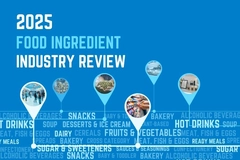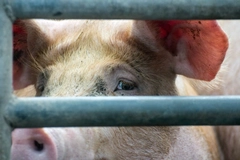
- Industry news
Industry news
- Category news
Category news
- Reports
- Key trends
- Multimedia
- Journal
- Events
- Suppliers
- Home
- Industry news
Industry news
- Category news
Category news
- Reports
- Key trends
- Multimedia
- Events
- Suppliers
Safeguarding citrus: New early diagnosis method could help protect crops from citrus greening

08 Aug 2019 --- Researchers have found a fast and low-cost staining method to diagnose one of the most serious citrus plant diseases, Citrus Huanglongbing (HLB), potentially helping to mitigate crop loss. The method identifies insect feeding sites, which are the transmission agent. The sites can then be tested for the causal agent (Candidatus Liberibacter asiaticus) using a quantitative real-time polymerase chain reaction. This allows HLB to be identified up to two days after transmission, instead of the months traditionally needed.
Citrus flavors are a staple in the industry and many major flavor houses have pegged it as a trend with lasting potential. Safeguarding citrus plants is especially critical currently, as the fruits have been pegged as one of the top summer flavor trends. Lemon continues to be the most important in terms of sales. Lime and grapefruit are always in demand, while orange is in demand in soft drinks containing juice.

HLB, also known as greening, is incurable and causes trees to produce bitter fruits that are green, misshapen, and unsuitable for sale. As the most effective methods to stop HLB spread involve early diagnosis, it is imperative that growers have access to a reliable technique.
The strategy for diagnosing HLB before the appearance of blotchy mottle symptoms was devised by Professor Nian Wang and his postdoctoral research associate Dr. Sheo Shanker Pandey, both from Citrus Research and Education Center, Department of Microbiology and Cell Science, at the Institute of Food and Agricultural Sciences of University of Florida.
This method allows the HLB causal agent to be detected long before the appearance of symptoms. Meanwhile, traditional methods rely on waiting for blotchy mottle symptoms to occur and then confirming disease presence using molecular tools. However, as symptoms typically do not occur for many months, the disease has ample opportunity to spread throughout the grove. This makes it difficult to prevent the spread of HLB through measures such as quarantine, controlling the insect that spreads the disease (Asian citrus psyllid), removing diseased trees and planting HLB-free trees.
Trees with the disease typically die within a few years, with HLB already having devastated the Florida citrus industry. An estimated 80 percent of Florida citrus trees are infected and some groves are no longer productive. Additionally, the disease currently poses a threat to California and Texas, as well as Australia and the Mediterranean region.
To help protect one of the world’s most extensive and diverse assortments of citrus from HLB, Givaudan donated US$3.5 million to the University of California, Riverside (UCR)’s Citrus Variety Collection. The company paid for 2.8-acre screened structure for new trees and back-up trees.
Meanwhile, there have recently been calls to protect insects and to halt the use of synthetic pesticides in the EU, in order to prevent the “collapse of nature.” Slashing pesticide use, along with ecologically-based farming, will help to halt or reverse the decline in insect populations, which are important for pollinating plants.
By Katherine Durrell










